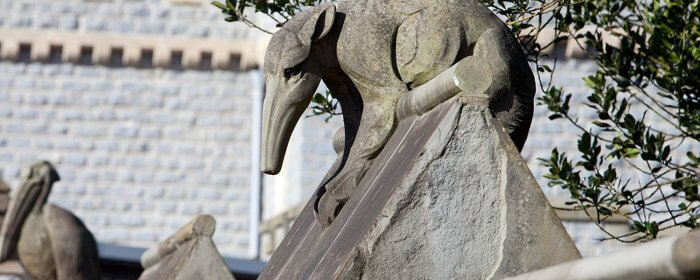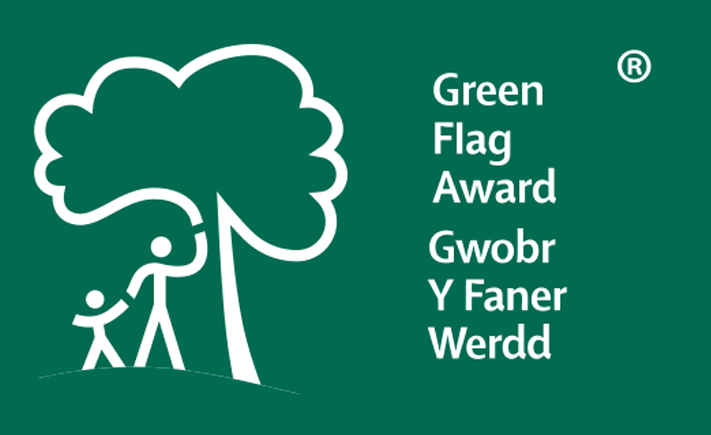The best view of the the Animal Wall is at the southern boundary of the park from Castle Street.
The carving of the animals began in the late 1880s. Architect William Frame brought the wall to life, based on sketches by
architect William Burges who was employed by the 3rd Marquess of Bute.
The original wall was built in the 1890s directly outside the castle. Original animals included: a pair of lions holding shields, a lioness, a lynx, a bear, a sea lion, a wolf, a pair of apes and a hyena. You can tell these apart from their later cousins because they have glass eyes.
The wall was moved and relocated west of the Castle in 1923 due to the widening of Duke Street, and six extra animals were added. The six additional animals were the vulture, beaver, leopard, a pair of raccoons, a pelican and an anteater.
Models of each animal were made for Lord Bute’s approval and two, including a sea horse, were rejected.
In 2010 as part of the park’s Restoration Project, the wall was comprehensively cleaned and badly damaged stone work repaired.
During this work, a section of the wall near to Cardiff Bridge was lowered to improve views into the park from Castle Street. The landmark wall has been conserved for the delight of future generations.
Details
Directions
Bute Park directionsSimilar attractions
- Pettigrew Tea Rooms
- Summerhouse Café
- Eastern Boundary Wall
- Gallery Footings
- Bridge Abutment
- West Gate Bridge
- Lady Bute’s Bridge and Well
- ‘Love Exploring’ app
- The People’s Door
- Cardiff Castle
- Bute Park for the young-at-heart
- Stuttgart Garden
- Dock Feeder Canal
- Blackweir Woods
- Meteorological Station
- Tree Charter Pole
- Gorsedd Stone Circle
- Blackfriar’s Friary
- Mill Leat
- The Animal Wall
- River Taff












